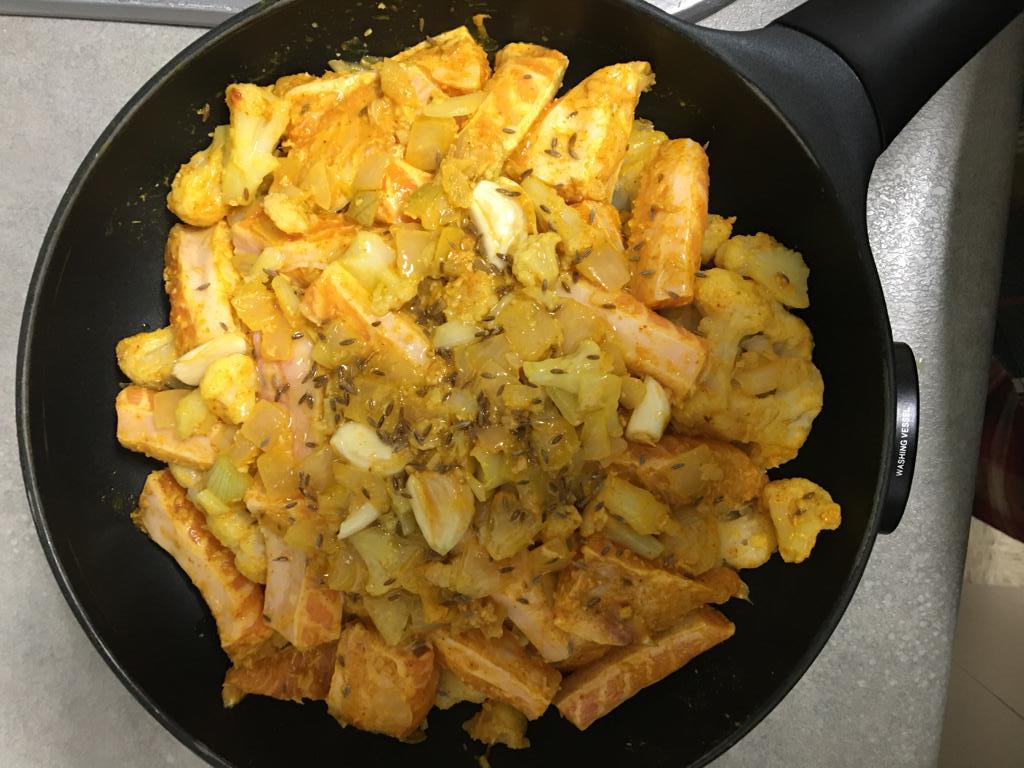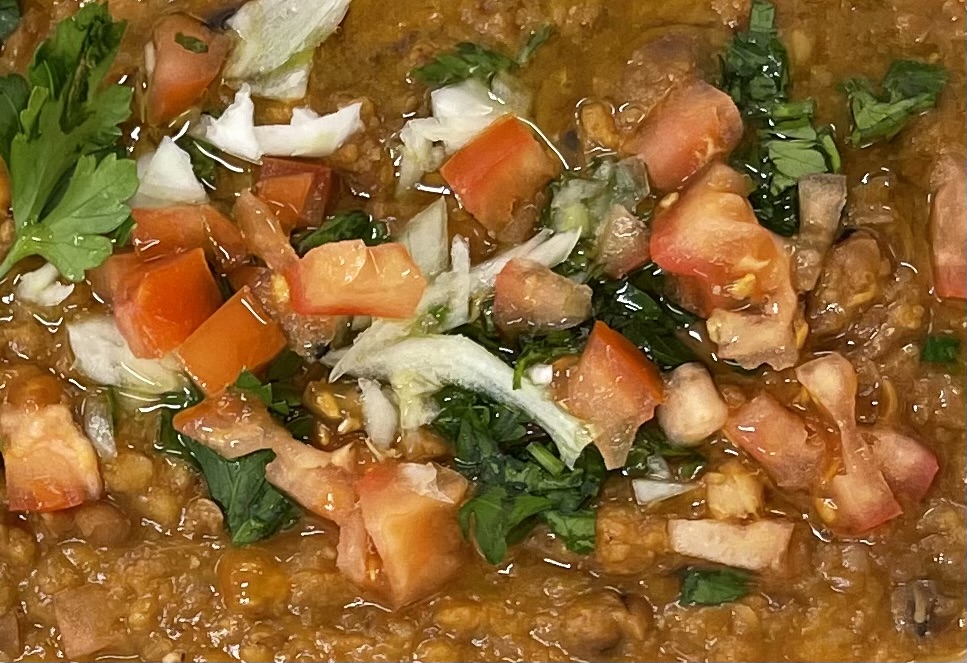Fathia’s Somali Pilaf
 Somalia
Somalia 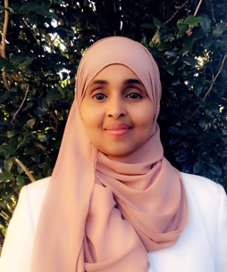
I am the third of eight siblings, all born and raised in the United Arab Emirates (UAE). My parents emigrated to the UAE from Hargeisa, Somaliland in the late 70s for better work opportunities. Their plan was to stay there for a few years and then go back but civil war broke out at home and we ended up staying for the long term.
Most of our extended family, including my grandparents and uncles and aunties, remained in Somaliland, so my parents were fearful for their families’ safety. They made sure that our contacts with our extended family stayed alive and we stayed in touch through letters and voice recordings using the technology available at the time, like audio cassettes, which seem so old-fashioned now.
My brothers and sisters and I grew up in a big family and a loving and caring environment. My parents, like other immigrant parents, worked hard to ensure we had a good education and enjoyed good health. They were also committed to keeping us in touch with our Somali roots and culture.
Sadly, I lost my Dad when I was twelve. He was a great man who was passionate about his culture. He was a poet and loved telling bedtime stories in a poetic fashion about our culture and our country. His death was devastating for us all, especially my Mum, who had to raise eight kids by herself without any access to the support of immediate family. As a shy little girl, I adored my Mum. I was always close to her and loved watching her cook. My Mum cooked every day and she was (still is) passionate about Somali food. Being away from home and feeling homesick, she found comfort in teaching us how to cook Somali dishes and in sharing the tales that come with it.
We did not have close relatives living near us but we lived close to a large Somali community. Ramadan was always special in the UAE as we gathered in groups of families to break our fast, share food and spend time together. It was common practice that a group of mothers would get together in our house and cook together. They would teach us about the ingredients for each dish and the words for each ingredient in Somali and tell us stories and sing us sweet Somali songs, some of which I still remember and sing to my children. The recipes I learned are embedded in my memory t0 this day.
Somaliland is famous for its rich livestock resources, which means that meat is an essential ingredient of any Somali dish and very often, Mum would paint a vivid picture of the Somali countryside where she grew up on a farm full of cattle, sheep and camels. Unfortunately, that beautiful image was shattered by the brutality of the civil war that destroyed the country.
The potted history is this: Somaliland had been a British protectorate. It gained independence and was recognized as an independent state in 1960 but with the desire of Somalis to live in one state, it subsequently joined with Italy’s former Somali colony (Somalia) to form the Somali Republic. The union was voluntary but it turned out to be disastrous for Somaliland, as the people found themselves marginalized in the new state. In 1969, the government of the Somali Republic was overthrown in a military coup and the new President Siyad Barre began a policy of calculated repression of the people of Somaliland. When the Somali National Movement stepped up its armed resistance to Barre’s oppressive regime in Somaliland in the late 1980s, Somalia’s armed forces attacked Somaliland, completely destroying its capital Hargeisa and killing an estimated 50,000 people, while displacing another 500,000. The UN sent military observers and then a peacekeeping force to Mogadishu but the fighting continued and after suffering significant casualities, the UN withdrew without any central authority having been established. Somalia was branded a ‘failed state’. The region is still suffering from extreme instability and unrest caused by the civil war and bombings claim innocent civilian lives on a regular basis.
The civil war started in the mid-80s, about 10 years after my parents had gone to work in the UAE. Before then, we had been in regular contact by letter and we knew my grandmother’s voice on the telephone, which had been introduced to Somaliland in the early 80s. Being so far away must have been terrifyingly worrying for my parents, especially as they lost touch with their parents during the civl war until they were found in a refugee camp in Ethiopia. After the war, my grandparents and aunts and uncles and cousins moved back to the north which was more stable than the south. Before, they had lived a semi-nomadic life in the countryside, but now they live in the city of Hargeisa.
Somaliland is now stable enough to visit and in 2015, my husband and the children and I went to see Somaliland for the first time. It was a life-changing trip, especially for our children but also for my husband and me. For the first time, I was able to see and live what my Mum taught me as a child!
My husband and I have one surviving grandmother and so the children were able to meet their great-grandmother, great aunts and uncles, aunts and uncles and second cousins. Our children were amazed by the generosity of the people they met, the simplicity of life, the animals they saw, and the delicious food they ate. I lived the culture by observing and taking part in the process of preparing the feast to welcome us. Women were cooking food in large pots on a charcoal fire outdoors and singing beautiful songs, just as my mother and her friends had done. Our children were excited when they saw two lambs and two goats in the house. They played with them all day only to wake up the next day and realise they had been slaughtered for the family feast! Although they cried and nobody could stop their tears, they thoroughly enjoyed eating the meat afterwards!
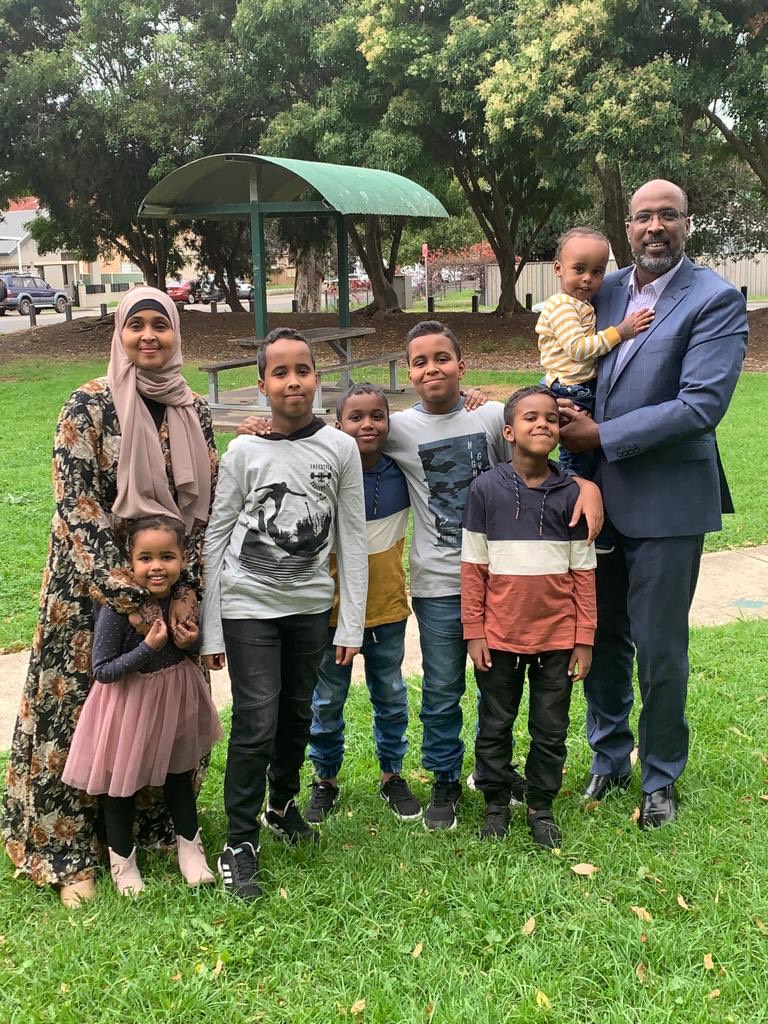
My mum is still in the UAE with four of my siblings. The other three are in the UK. My kids use Skype and WhatsApp to stay in touch with their grandparents, especially at Ramadan and Eid when we have a kind of vigil: my mum watches as we break our fast in Sydney, many hours ahead of the UAE. She feels sad missing the children fasting and found it particularly hard when my first son, her first grandchild, was born and she wasn’t there. My Mum still lives in the UAE, but as the UAE doesn’t grant the privilege of citizenship and my husband and I left, we can’t live there. My husband and I knew each other growing up as neighbours but he left the UAE to study in Syria and became a refugee when the war broke out there. He was accepted as a UN refugee to New Zealand and I left the UAE so that we could marry and start our own family. One of my sisters is also a nurse in the UAE and so she cares for my mother.
My mother and I are still very close and we talk every day. Sometimes I feel we have had very similar experiences, both of us having been separated from our mothers, she by war, me by citizenship. The difference is that I have the privilege, stability and security of New Zealand citizenship for which I feel hugely grateful. Thankfully WhatsApp means we can talk and communicate in real time – sometimes about what clothes I should buy, trying them on and sending her pictures, sometimes about what to cook! Thank goodness for modern technology!
No matter how far apart we are, our family, our roots, remembering and celebrating our culture and reinforcing our sense of being together is very important. When I cook, like my mum, I often sing too! A very popular Somali song called Mother’s Whomp (Uur Hooyo) which communicates the deep feelings people experience when they are separated by distance is one I remember my mum singing and it is a favourite of mine.
This dish – Somali Pilaf Rice (Bariis & Hilib) – is one I associate with my mum. A colorful rice dish, it is served at almost every festive occasion and makes my heart and tastebuds sing!
Historically Somaliland and its long coastline was a stopping off point for traders so Somali cuisine is rich with flavours from the Middle East and Asia. Traditionally cooked by very experienced ladies, cooking together outside, with a meat broth that has been simmered for hours, and freshly prepared aromatic spices (Xawaash), this dish is very popular amongst Somalis everywhere during Ramadan and is served on a large plate so that everyone can help themselves.
Ramadan in 2020 is different because of the Coronavirus so we cannot hold large gatherings for group iftar, but my husband and I have tried to seize the opportunity to teach our children what we inherited from our parents. We have cooked this dish together and we will also cook it on Eid ul-Fitr, the day of celebration and feasting which comes at the end of Ramadan. Eid is usually celebrated for two to three days so it seems very ironic that after weeks of lockdown and home schooling the second and third days of Eid this year are the first full days back at school.
Share this story
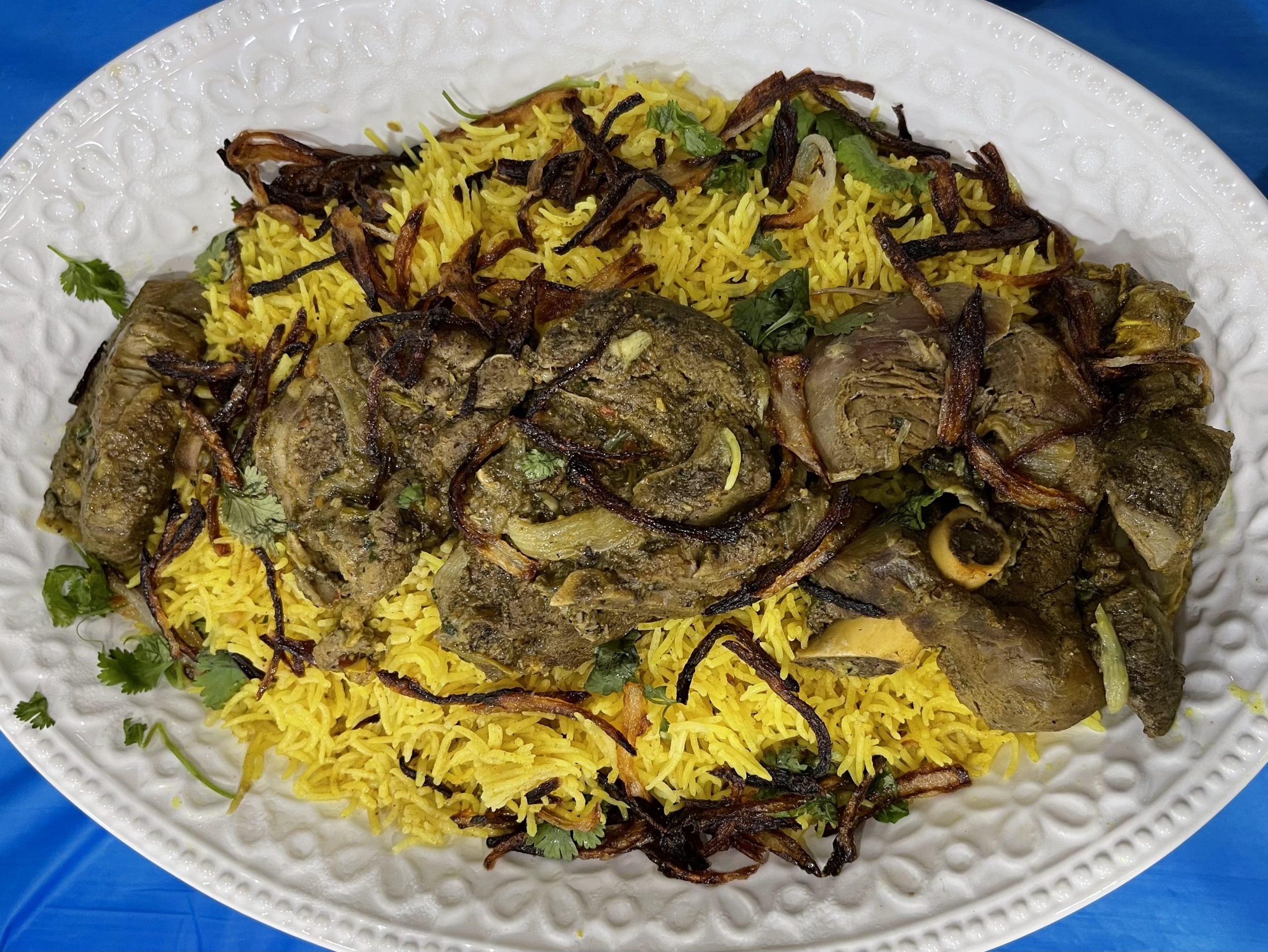
To prepare the Xawaash spice mix:
In a dry pan over medium heat, toast the cumin seeds, 3 tbsps coriander seeds, peppercorns, cardamom pods, whole cloves and 2 sticks of cinnamon for a couple of minutes until they turn gold in colour. Use a spice grinder or mortar and finely grind all the spices. Then add the turmeric and the ginger and mix together well.
TIP: You can make large quantities and store in airtight containers. This spice goes in every dish in Somali cuisine.
To prepare the meat broth:
Put the meat and water into a large pot and bring to boil, skimming off impurities that rise to the surface. Use a pestle and mortar to grind 7 cloves of garlic and a teaspoon of coriander seeds together roughly and then add them to the boiling water. Add the 2 sliced onions, carrots, tomatoes, capsicum, fresh coriander (saving 1 tsp for the rice), 1 teaspoon cumin seeds, black pepper, salt, and 1 tablespoon of the Xawaash mix. Cover and simmer for 3 hours.
To prepare the rice:
Meanwhile, wash and soak the basmati rice for one hour. When the broth is ready, Ttake the meat out of it and set aside. Then strain the broth.
Warm the oil in a large pan and add the chopped onion. Cook over a medium heat. Add 2 sticks of cinnamon, 1/2 teaspoon cardamom pods and 1/2 teaspoon cloves. Add 4 cloves of garlic, one big teaspoon of chopped coriander and 1 teaspoon of Xawaash spice mix. Stir everything together till it’s golden brown in colour and aroma comes out.
Add the soaked rice and mix everything well. Add 2 litres of the meat broth and salt to taste. Then cover and bring to boil for around 5 minutes. Simmer the rice on low for a round 20 minutes until it’s cooked.
